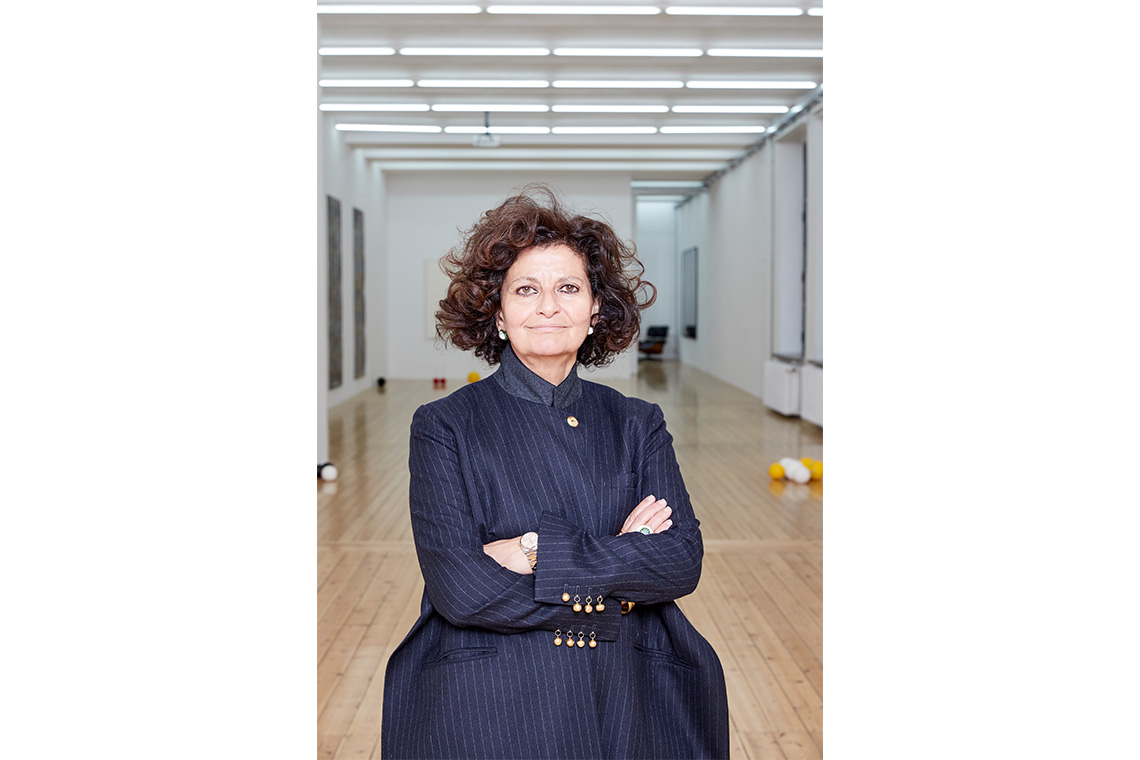Sfeir-Semler Gallery recently celebrated a major milestone, marking 40 years of fostering artistic dialogue between the Middle East and the international art scene, as well as 20 years since opening in Beirut. Founder Andrée Sfeir-Semler looks back on bringing global recognition to some of the now most influential voices in Arab contemporary art.
Canvas: How did the story of Sfeir-Semler Gallery start?
Andrée Sfeir-Semler: I opened my first gallery in Kiel, Germany in 1985, as I lived in Germany longer than I’ve ever lived in Lebanon. I was born in Lebanon. My DNA is Lebanese and I grew up in Beirut, but then went to Germany, where I have lived since 1975, when the war broke out.
The gallery in Beirut came later. In the early 2000s, I saw the work of Walid Raad at an exhibition in Berlin that Catherine David had set up. I recognised the Beirut Corniche in one of the films, and after the show the artist and I talked. I began exploring the art scene of the region and eventually started representing his work. I realised that in the Middle East there were galleries, but no white cube-style spaces, nothing comparable to what we are familiar with in the West.
What made you want to open a gallery in Beirut?
I had wanted to give back to this country and bridge new artists and the international scene by helping them produce new work, showcasing them, and introducing them to curators, museums and institutions in the West. We started from scratch with almost everyone, even Etel Adnan – no one knew her on the scale she is now known before we started showing her and introducing her to important curators. The quality of the work was there, but there were no advocates to promote the artists and create museum-quality exhibitions.

Image courtesy of the artists and Sfeir-Semler Gallery Beirut / Hamburg
The gallery opened in 2005 during a turbulent time. What was it like?
Opening the gallery in 2005 was a major moment, both for us and the regional scene. Prime Minister Rafic Hariri had just been assassinated at the end of February, and we managed to have an incredible opening on 9 April, on the day when a rally was launched by Nora Jumblatt and Bahia Hariri asking for the Syrians to leave. The crowds were marching with the Lebanese flag, but despite all this, we had 1800 visitors that day in the gallery.
Over the years, the artists you work with have become big players regionally and internationally. How does Sfeir-Semler Gallery stay on the pulse of the moment?
Internationally we became specialists in Arab art, and we found there was an increasing demand for it. Our artists are rooted in the Arab world, their language and expressions are rooted in this culture, but their artistic language is universally relevant. They often explore ideas that anyone can relate to.
What I’m also so thankful for is that the artists we started working with 20 years ago are still working with us, and they’re like our family. They’re all in our current group show [The Shade at the Beirut location] and many travelled from abroad to celebrate our anniversary with us. What makes the quality of a gallery is not a single show or filling a space with art, it is consistency. It’s doing three major exhibitions a year, despite all the political problems we face in Lebanon, despite the murder of politicians and journalists, censorship of certain topics and the many crises. You keep on going and continue with a high-end standard for over 20 years.
What were some highlights for the gallery over the years?
A major moment for us was when Carolyn Christov-Bakargiev was invited to be the artistic director of dOCUMENTA (13) in 2011. That year, Arab artists made up the largest number of non-Western artists in the history of documenta, and the majority of these artists with a gallery were represented by us.
We also represented Akram Zaatari at the Lebanese Pavilion at the Venice Art Biennale in 2013, he almost won the Golden Lion! Then just last year in Venice, we had a Wael Shawky show with the Egyptian Pavilion and Mounira Al Solh at the Lebanese Pavilion . Both were incredible exhibitions that people continue to talk about. There were queues to see Wael’s show.
Next year, we will also have a major presence at the Venice Art Biennale, with Yto Barrada representing France and Sung Tieu representing Germany, among others!



